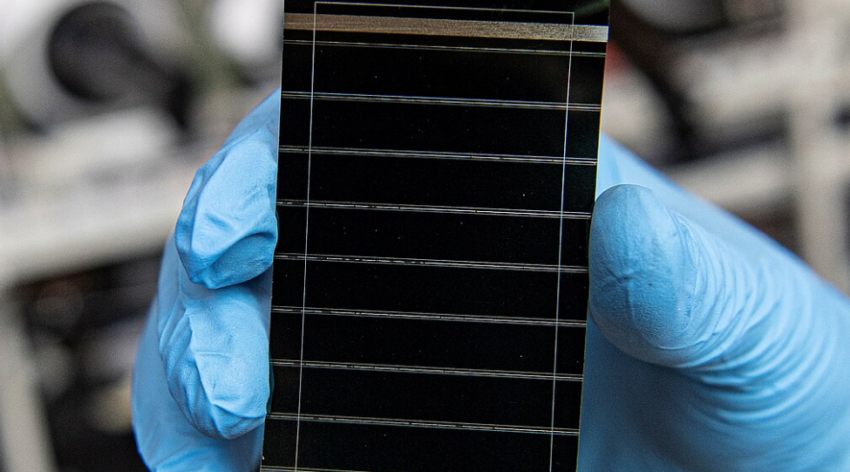| Listen to our audio presentation: Quantum Entanglement |
The quest for more efficient and cost-effective solar energy has taken a significant leap forward with the development of perovskite-silicon tandem solar cells. A new study published by Nature on September 5, 2024, highlights a breakthrough in photovoltaic technology: a bilayer interface passivation strategy that has pushed power conversion efficiency (PCE) to record levels. According to Nature, this technology allows for higher efficiency by combining perovskite and silicon, two materials with complementary absorption characteristics, into a tandem solar cell.
A New Era of Efficiency
Perovskite-silicon tandem solar cells represent a cutting-edge innovation by integrating two different types of solar materials. Perovskites, known for their ability to absorb higher-energy photons from visible light, are placed on top of a traditional silicon layer, which absorbs lower-energy photons, particularly in the infrared range. This combination allows for a broader spectrum of sunlight to be captured, significantly enhancing energy conversion efficiency. The bilayer interface passivation approach plays a critical role here, as it minimizes energy losses that occur at the junctions between the different materials.
The Digital News Report science team explains that tandem solar cells have been the subject of intense research due to their potential to exceed the efficiency limits of standard silicon-only cells. With a certified PCE of 33.89%, these tandem cells surpass the Shockley-Queisser limit, which caps single-junction solar cell efficiency at 33.7%.
The Role of Bilayer Interface Passivation
One of the most significant challenges in tandem solar cell development has been addressing recombination at the interface between the perovskite layer and the electron transport layer. Recombination occurs when electrons and holes recombine before contributing to current flow, reducing overall efficiency. To counter this, researchers have introduced a bilayer interface passivation technique.
As described in Nature, this technique uses a nanoscale LiF ultrathin layer combined with diammonium diiodide molecules, creating a smoother transition between the layers. This approach effectively suppresses nonradiative recombination, enhancing the flow of electrons and improving overall performance without compromising the superior charge transport of the tandem cell.
Advantages of Bilayer Passivation
The use of bilayer passivation not only improves efficiency but also boosts the stability of the solar cells. Traditional perovskite solar cells have been known for their vulnerability to environmental factors such as humidity and heat. By incorporating a protective bilayer, this new design helps prolong the operational lifespan of the cells, addressing one of the most significant hurdles to commercialization.
In tandem structures, the bottom silicon layer benefits from the additional rear-side passivation, which further boosts photocurrent without sacrificing durability. The combination of these materials allows the tandem cell to outperform traditional single-junction cells in both efficiency and stability.
Challenges and Future Prospects
Despite these advancements, challenges remain in scaling up the production of perovskite-silicon tandem solar cells while maintaining their performance. The manufacturing process for applying bilayer passivation requires precise control, and uniformity is crucial for ensuring the efficiency gains translate into large-scale applications. According to Digital News Report, efforts are ongoing to refine production techniques and improve the long-term stability of these cells, particularly concerning the materials used in passivation.
A Bright Future for Solar Energy
The promise of perovskite-silicon tandem solar cells lies not only in their record-breaking efficiency but also in their potential to revolutionize solar energy production on a global scale. As these cells become more refined and scalable, they could lead to more cost-effective and powerful solar panels, accelerating the transition to renewable energy sources. The combination of higher efficiency, improved stability, and potential cost savings makes this technology a compelling solution for the future of solar power.
Image Credit: https://en.wikipedia.org/wiki/Perovskite_solar_cell#/media/File:Perovskite_solar_cell.jpg Public Domain

